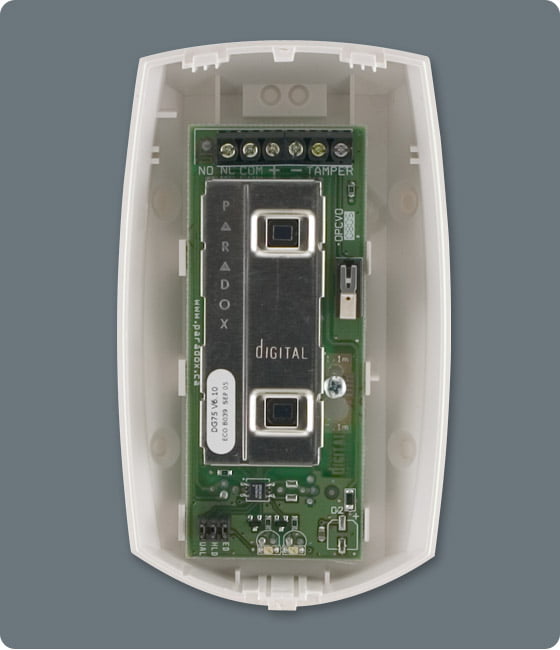Is it viable to use typical PIR and dual technology sensors in external environments, or should this work be dealt with using externally rated PE beams?
A: An average inexpensive passive infrared receiver is fine in a stable internal environment. If it has well-designed circuitry then it’s going to be able to handle popcorn noise and all the other distractions that can cause false alarms indoors without drama. Go outdoors, however, and things are likely to get weird.
Some inexpensive PIRs have EMI, RFI and white light protection and with clever pulse count and/or sensitivity settings (you’d need to change these in summer) a good installer could handle covered external jobs. Sadly, the sun is not the only problem for PIRs. There’s rain, too. Anything you install outside needs to be able to handle greater insect numbers, wildlife, pets, damp, dust and physical abuse. Could you bind up a simple PIR with sealant (conformal spray the circuit board first) and use custom settings to get adequate performance outdoors in summer under covered areas? Perhaps you could.
The difference between higher quality PIRs and the run-of-the-mill units include things like digital signal processing, superior circuit design, improved lens and/or mirror design, dust and insect proofing, high quality quad pyroelectric elements, and $30-70 in additional cost. A key question is whether PIRs that have been built to handle tough environments are going to be more capable outside than similarly priced dual technology sensors that may be relying on 2 technologies to support less purposeful designs.
Any sensor used outdoors must be water, dust and insect proof. Allowance has to be made for pets and wildlife – that means there will be a trade-off in terms of sensitivity. PIRs are not happy in strong sunlight but too much sensitivity tweaking with PIRs and you can walk past them without detection, too little and there will be false alarms. You also need to keep dual technology sensors away from perimeter fences where the microwave might pick up activity outside your chosen target area and spend considerable time in alarm.
We think it’s better to buy one high quality, high-cost external sensor ($100-plus) for an outdoor application, than to buy 2 or 3 low-cost sensors ($20-30) and risk coming back once to resolve false alarms issues. Think Rokonet WatchOUT, Bosch OD850, Paradox DG85 or similar. High end external sensors give a lot of performance for the money and integrate easily with standard alarm panels. Just make sure you install them with sympathy and be prepared to move them around during a longer than usual commissioning period.
#sen.news









